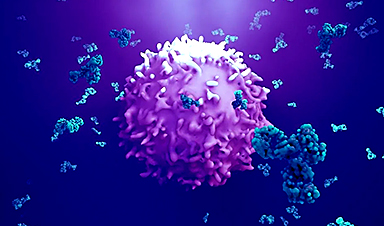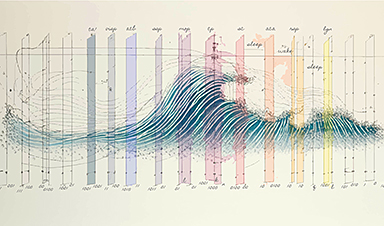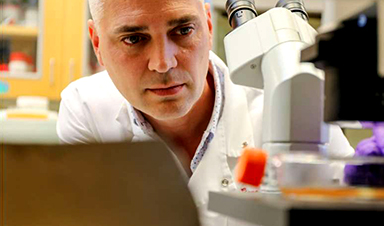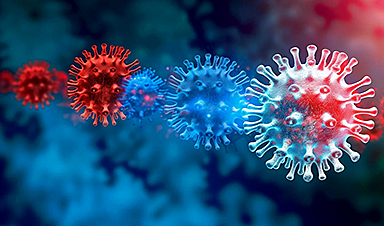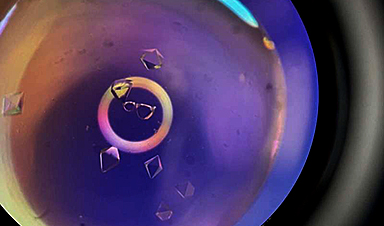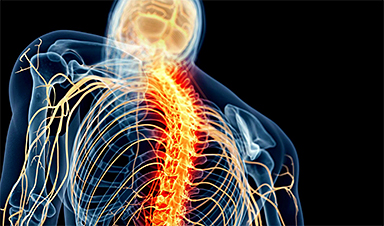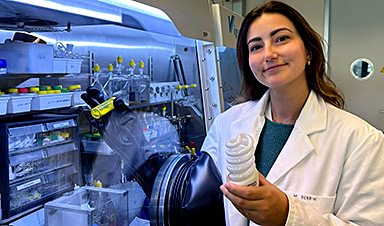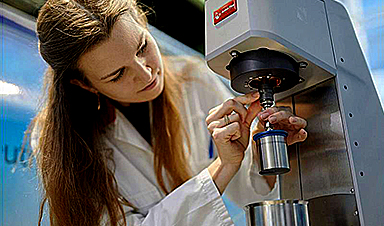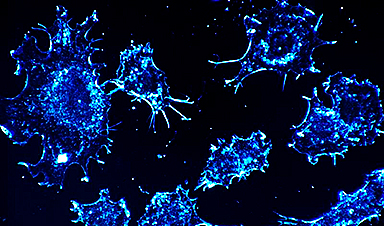A recent article published in the journal ACS Nano discusses the application of Escherichia coli (E. coli)-mimetic nanomaterials for photolytic treatment of CT-26 or 4T1 tumors.
The authors synthesized the target nanomaterials using E. coli membrane proteins, gold nanorods (AuNRs), and adhesion proteins and named them E. coli-mimetic AuNRs (ECA). Further, the synthesized ECA showed a preventive effect in mice with CT-26 or 4T1 tumors under 808-nanometer laser irradiations.
Metastasis or reoccurrence are the key reasons behind the increase in cancer mortality, and treating recurrent or metastatic cancers is the end goal of cancer therapy. Combination therapy is an effective treatment for metastasis and reoccurrence. Further, combining nanomaterial-based phototherapy with chemotherapy has a scope in cancer treatment.
Nanomaterials in Cancer Therapy
Selective treatment of cancer cells through immunotherapy involves activation of immune cells, especially T lymphocytes aiding in eliminating cancer by inducing antigen-specific cytotoxicity. In this context, the dendritic cells (DCs) activated T cells selectively destroy antigen-expressing cells in cancer treatment.
Photothermal therapy (PTT) used for localized cancer treatment involves light energy conversion into thermal energy upon irradiation with a near-infrared (NIR) laser.
Nanomaterials can carry drugs to specific targets and aid in effective disease treatment. Further, they are used in combinational therapy to deliver more than one drug. Moreover, nanoparticles based on inorganic materials such as iron oxide nanoparticles, mesoporous silica nanoparticles, AuNRs, and quantum dots are effective PTT agents. AuNRs are efficient for photothermal conversion and surface functionalization and have good biocompatibility. However, cetyltrimethylammonium bromide (CTAB) on their surface makes them highly toxic, and surface modification of AuNRs helps reduce their toxicity.
ECA in Cancer Treatment
In the present study, the authors optimized the sonication and temperature conditions to synthesize ECA. Under NIR irradiation, while the AuNR in ECA had a phototherapeutic effect, the anticancer immunity was induced by the adhesion and surface proteins of ECA. Further, the authors used the synthesized ECA to treat primary tumors and secondary metastatic cancer in mice. The results revealed that the NIR laser light at 808 nanometers raised the temperature in ECA-treated tumor cells and induced apoptotic or necrotic cell death, exhibiting a therapeutic effect on CT-26 and 4T1 tumors in mice.
ClearColi lysate, fimbrin D-mannose-specific adhesin (FimH), and NIR laser irradiation activated immune cells, including T cells and DCs in tumor-draining lymph nodes (tdLNs). Finally, the mice transplanted with CT-26 or 4T1 tumors were cured of the primary tumor and blocked secondary lung metastasis on treatment with ECA.
ECA Characterization and Evaluation of its Therapeutic Potential
The morphology of ECA was analyzed by employing transmission electron microscopy (TEM). The resulting images showed a liposomal corona on the surface of AuNR on the peripheral side of liposome-coated AuNR (LCA) and ECA. The dynamic light scattering (DLS) studies revealed that the hydrodynamic sizes of LCA and ECA were 93.72 ± 2.7 and 116.8 ± 6.5 nanometers, respectively. Further, LCA and ECA showed a negative zeta potential of −4.6 and −12.7 millivolts.
The analysis of ECA using Fourier-transform infrared (FT-IR) spectra revealed characteristic peaks of phospholipids at 1735-centimeter inverse that corresponds to the carbonyl group, 1230-centimeter inverse to metaphosphate ion (PO2−), 1075-centimeter inverse to ether linkage (C-O-O) and peaks at 1646, and 1394-centimeter inverse that corresponds to amide bond. This data confirmed ECA modification with phospholipids, ClearColi lysate, and FimH on the surface of AuNR.
The studies of the photothermal effect of AuNR, LCA, and ECA revealed that the NIR irradiation on these nanomaterials induced a temperature rise and stimulated apoptotic/necrotic cell death. However, there was no temperature rise or apoptotic/necrotic cell death without laser irradiation, thus confirming the application of AuNR, LCA, and ECA as photothermal materials for tumor treatment.
Further, injecting Bagg Albino (BALB/c) mouse with PBS, liposome, FimH, liposome + FimH, AuNR, LCA, and ECA and irradiating with NIR laser of 808 nanometers showed a temperature rise at the tumor sites of AuNR, LCA, and ECA. However, the tumors treated with PBS, liposome, FimH, liposome + FimH had no response. Twenty days after treatment, the mice did not show tumor growth, reoccurrence, liver toxicity, or alanine aminotransferase (ALT) levels elevation in serum. This confirms the potential of AuNR, LCA, and ECA as PTT agents against tumors.
Later, the authors observed that the mice treated with AuNR and LCA PTT agents as the first tumor treatment showed partial resistance to the second cancer challenge without antigen-specific T-cell activities. However, the ECA PTT treatment stimulated antigen production and immune activation to promote antigen-specific immune activity, thus protecting against lung metastatic cancer (second challenge) in mice.
Conclusion
The authors of this study realized the goal of treating cancer metastasis or recurrence with a novel ECA nanomaterial. The synthesized ECA upon NIR laser irradiation-induced immune cell activation in the tumor-draining lymph nodes. Further ECA showed a therapeutic effect against CT-26 colonic epithelial cell carcinoma and 4T1 orthotopic breast cancer.
Thus, the results show the dual functionality of ECA nanomaterials as PTT for primary cancer treatment and immunotherapy against recurrence and metastasis. The authors believe that ECA will be used to block metastasis and treat primary cancers in humans in the future.
News
The Silent Battle Within: How Your Organs Choose Between Mom and Dad’s Genes
Research reveals that selective expression of maternal or paternal X chromosomes varies by organ, driven by cellular competition. A new study published today (July 26) in Nature Genetics by the Lymphoid Development Group at the MRC [...]
Study identifies genes increasing risk of severe COVID-19
Whether or not a person becomes seriously ill with COVID-19 depends, among other things, on genetic factors. With this in mind, researchers from the University Hospital Bonn (UKB) and the University of Bonn, in [...]
Small regions of the brain can take micro-naps while the rest of the brain is awake and vice versa
Sleep and wake: They're totally distinct states of being that define the boundaries of our daily lives. For years, scientists have measured the difference between these instinctual brain processes by observing brain waves, with [...]
Redefining Consciousness: Small Regions of the Brain Can Take Micro-Naps While the Rest of the Brain Is Awake
The study broadly reveals how fast brain waves, previously overlooked, establish fundamental patterns of sleep and wakefulness. Scientists have developed a new method to analyze sleep and wake states by detecting ultra-fast neuronal activity [...]
AI Reveals Health Secrets Through Facial Temperature Mapping
Researchers have found that different facial temperatures correlate with chronic illnesses like diabetes and high blood pressure, and these can be detected using AI with thermal cameras. They highlight the potential of this technology [...]
Breakthrough in aging research: Blocking IL-11 extends lifespan and improves health in mice
In a recent study published in the journal Nature, a team of researchers used murine models and various pharmacological and genetic approaches to examine whether pro-inflammatory signaling involving interleukin (IL)-11, which activates signaling molecules such [...]
Promise for a universal influenza vaccine: Scientists validate theory using 1918 flu virus
New research led by Oregon Health & Science University reveals a promising approach to developing a universal influenza vaccine—a so-called "one and done" vaccine that confers lifetime immunity against an evolving virus. The study, [...]
New Projects Aim To Pioneer the Future of Neuroscience
One study will investigate the alterations in brain activity at the cellular level caused by psilocybin, the psychoactive substance found in “magic mushrooms.” How do neurons respond to the effects of magic mushrooms? What [...]
Decoding the Decline: Scientific Insights Into Long COVID’s Retreat
Research indicates a significant reduction in long COVID risk, largely due to vaccination and the virus’s evolution. The study analyzes data from over 441,000 veterans, showing lower rates of long COVID among vaccinated individuals compared [...]
Silicon Transformed: A Breakthrough in Laser Nanofabrication
A new method enables precise nanofabrication inside silicon using spatial light modulation and laser pulses, creating advanced nanostructures for potential use in electronics and photonics. Silicon, the cornerstone of modern electronics, photovoltaics, and photonics, [...]
Caught in the actinium: New research could help design better cancer treatments
The element actinium was first discovered at the turn of the 20th century, but even now, nearly 125 years later, researchers still don't have a good grasp on the metal's chemistry. That's because actinium [...]
Innovative Light-Controlled Drugs Could Revolutionize Neuropathic Pain Treatment
A team of researchers from the Institute for Bioengineering of Catalonia (IBEC) has developed light-activated derivatives of the anti-epileptic drug carbamazepine to treat neuropathic pain. Light can be harnessed to target drugs to specific [...]
Green Gold: Turning E-Waste Into a Treasure Trove of Rare Earth Metals
Scientists are developing a process inspired by nature that efficiently recovers europium from old fluorescent lamps. The approach could lead to the long-awaited recycling of rare earth metals. A small molecule that naturally serves [...]
Cambridge Study: AI Chatbots Have an “Empathy Gap,” and It Could Be Dangerous
A new study suggests a framework for “Child Safe AI” in response to recent incidents showing that many children perceive chatbots as quasi-human and reliable. A study has indicated that AI chatbots often exhibit [...]
Nanoparticle-based delivery system could offer treatment for diabetics with rare insulin allergy
Up to 3% of people with diabetes have an allergic reaction to insulin. A team at Forschungszentrum Jülich has now studied a method that could be used to deliver the active substance into the [...]
Nanorobot kills cancer cells in mice with hidden weapon
Researchers at Karolinska Institutet in Sweden have developed nanorobots that kill cancer cells in mice. The robot's weapon is hidden in a nanostructure and is exposed only in the tumor microenvironment, sparing healthy cells. [...]
